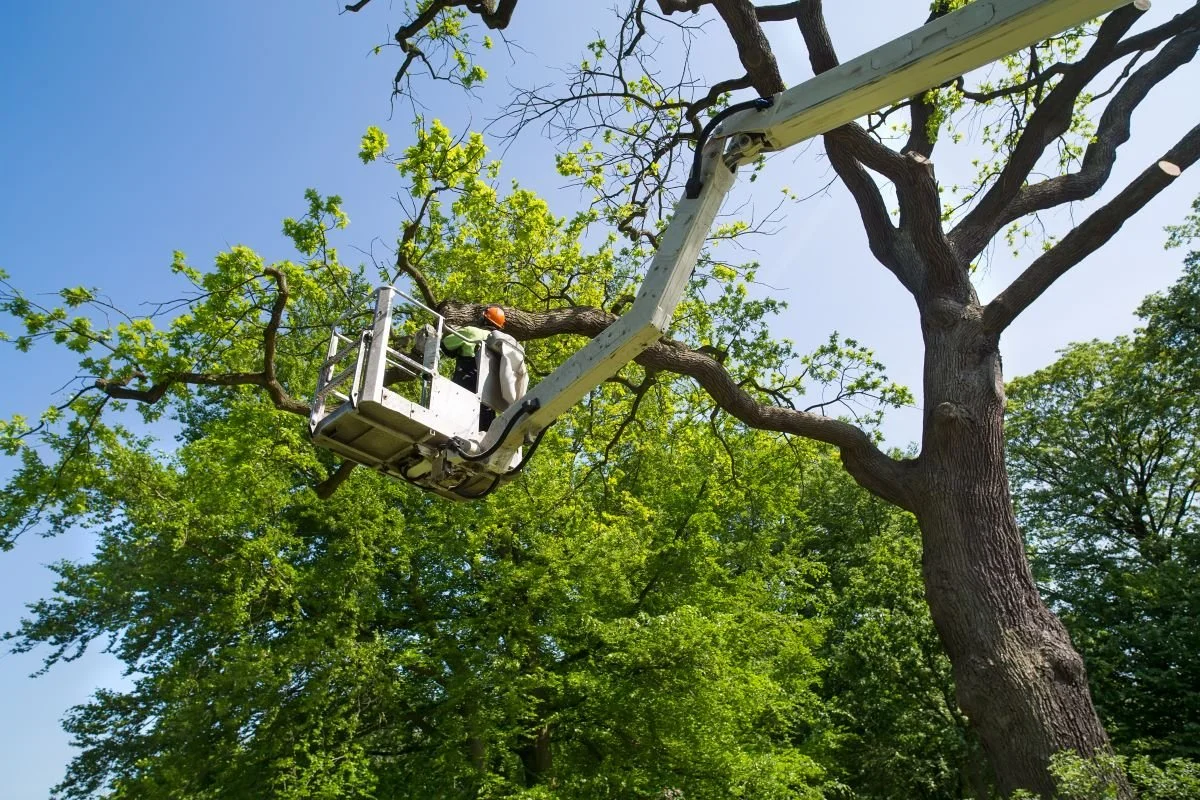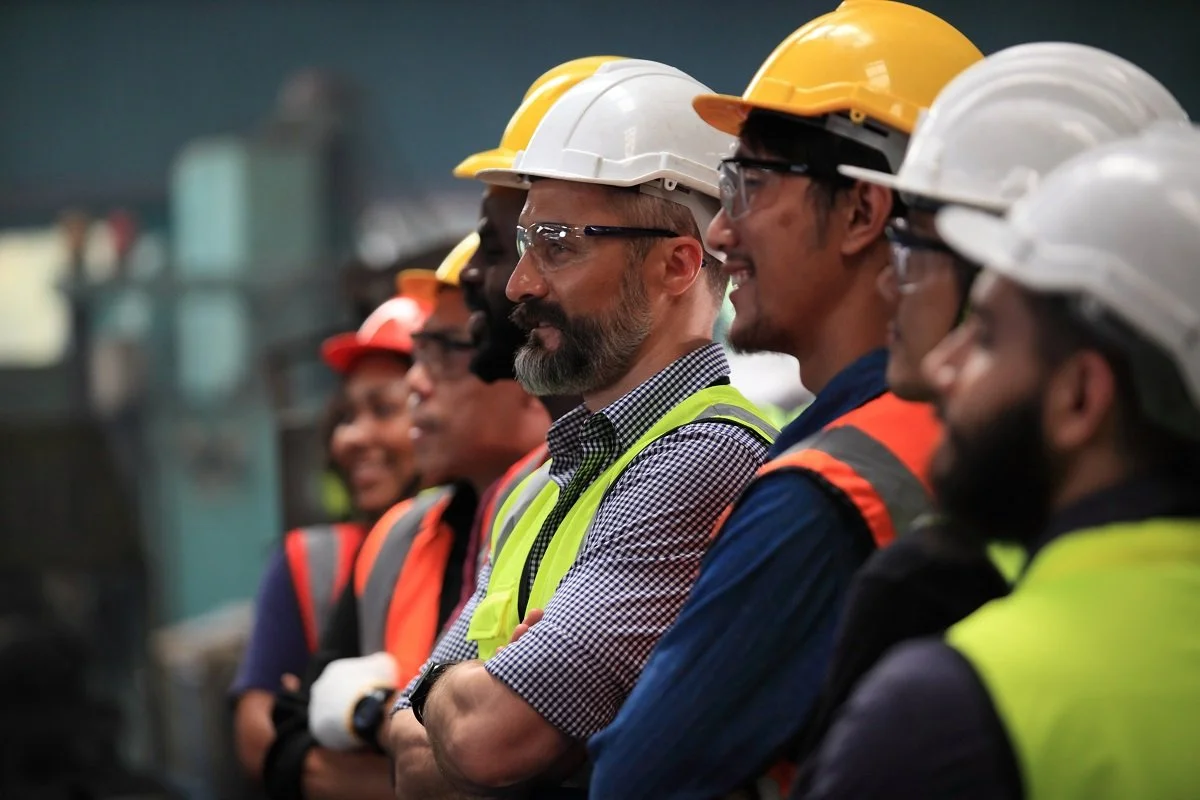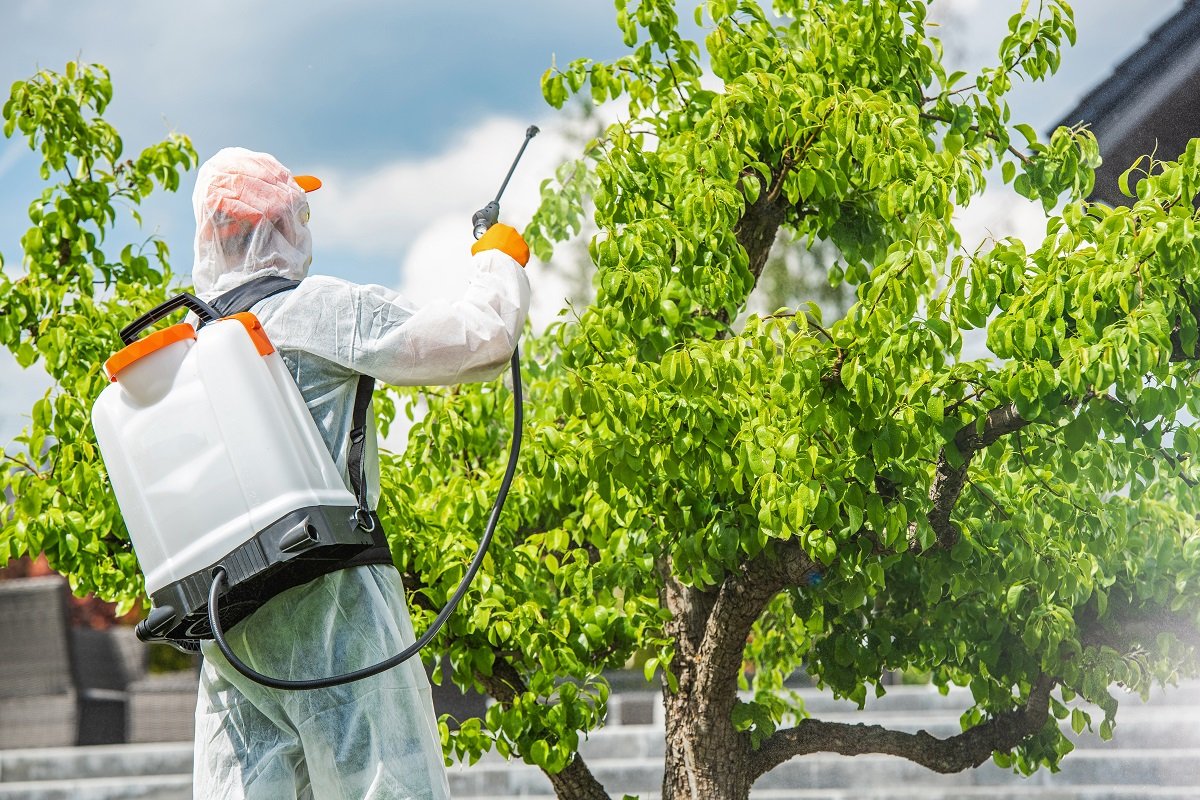
Industry News

First Four Steps to Take Immediately After a Data Breach
Author, Sam Brown, Account Executive, Rancho Mesa Insurance Services, Inc.
On Friday, July 14th Rancho Mesa hosted a popular workshop titled “Cyber Liability Explained: Hacking Trends for 2023” with presenter Beau Bechelli of Evolve MGA. His 60-minute presentation educated the audience on the cost of cyber-attacks, the most common types of attacks, and practical ways to help reduce the threat of a breach.
Author, Sam Brown, Account Executive, Rancho Mesa Insurance Services, Inc.
On Friday, July 14th Rancho Mesa hosted a popular workshop titled “Cyber Liability Explained: Hacking Trends for 2023” with presenter Beau Bechelli of Evolve MGA. His 60-minute presentation educated the audience on the cost of cyber attacks, the most common types of attacks, and practical ways to help reduce the threat of a breach.
This article will cover recommended steps an organization should take immediately following a data breach.
Call Insurance Agent
Immediately call the business’ insurance agent or the cyber insurance policy’s claim reporting line to report details of the incident.
Secure Operations
According to the FTC.gov’s Data Breach Response Guide, an organization should first take steps to quickly secure its operations. This may require:
New locks and access codes to physical areas
Taking all affected equipment offline immediately
Remove improperly posted information from the organization’s website
Search for the organization’s exposed information on the web
FTC.gov also recommends interviewing individuals who discovered the breach and advises against destroying evidence.
Address Vulnerabilities
The organization should next address the system’s vulnerabilities compromised in the breach. Contact any service providers involved to assess the personal information to which the provider had access and determine if it’s necessary to change access privileges.
Work with the forensics team to understand if the breach is contained and determine the status of the network’s backup data. This process should also produce the number and types of records compromised. Begin corrective measures as soon as possible.
Notify Appropriate Parties
The guide instructs businesses to notify law enforcement, other affected businesses, and affected individuals. Work with the insurance company’s assigned legal counsel to ensure compliance with all state and federal notification requirements.
Please refer to the Federal Trade Commission’s Data Breach Response Guide for more detailed steps.
For those who are interested in learning more about how cyber-crimes affect real businesses, watch “Cyber Liability Explained: Hacking Trends for 2023.”
Contact me to discuss the merits of cyber liability insurance or a possible data breach at (619) 937-0175 or sbrown@ranchomesa.com.
SafetyOne™ Mobile App Streamlines Safety Within the Janitorial Industry
Author, Jeremy Hoolihan, Account Executive, Rancho Mesa Insurance Services, Inc.
Earlier this year, Rancho Mesa launched its proprietary SafetyOne™ mobile app. Feedback so far has been extremely positive, with many clients taking full advantage of the extensive resources the app provides.
Author, Jeremy Hoolihan, Account Executive, Rancho Mesa Insurance Services, Inc.
Earlier this year, Rancho Mesa launched its proprietary SafetyOne™ mobile app. Feedback so far has been extremely positive, with many clients taking full advantage of the extensive resources the app provides.
As a specialist in the janitorial industry, I have already witnessed how much SafetyOne has improved our clients’ risk management programs. When asked how the app can improve a risk management program, we focus on efficiency and how the app will streamline all of a business’ processes.
For example, the app will help improve the lines of communication between management and crews by sending push notifications to mobile app users, such as crew leaders, with important information and reminders. The app will document incidents at your clients’ location and automatically notify the appropriate administrators in real-time.
The app also ensures that safety trainings are a priority. A company’s administrative staff will be able to determine what safety training topics will be available to each crew. Then, crews will be able to document regular safety meetings easily through their mobile device. The safety meeting documentation will be available in real-time, which helps management address who might have missed the meeting.
In addition, the app is helpful in addressing and minimizing safety issues in the field. The app allows a user to perform and document risk observations at each jobsite to find and address safety concerns before there is an incident.
And finally, one of the most talked about advantages the app provides Rancho Mesa clients is the ability to go paperless. The SafetyOne app eliminates paperwork through electronic documentation of safety meetings, risk observations and other forms. This allows the information to be accessed at any time.
If you are a Rancho Mesa client and have not yet explored the capabilities of SafetyOne, we strongly recommend you explore this new technology. With the assistance of training videos and our client services team, the implementation should be straightforward and easy.
If you have any questions relating to SafetyOne, please feel free to reach out to me at (619)937-0174 or jhoolihan@ranchomesa.com.
Take Your Safety Program to the Next Level through Leading Indicators
Author, Drew Garcia, Vice President of the Landscape Group, Rancho Mesa Insurance Services, Inc.
When it comes to measuring safety, most green industry (i.e., lawn, landscape, and tree care) businesses rely on OSHA rates, the experience modification, and, if you’re a Rancho Mesa customer, your Safety KPI Dashboard. This data is important; however, it only captures lagging information. Take your safety program to the next level by measuring predictive, preventive, and proactive - leading indicators.
Author, Drew Garcia, Vice President of the Landscape Group, Rancho Mesa Insurance Services, Inc.
When it comes to measuring safety, most green industry (i.e., lawn, landscape, and tree care) businesses rely on OSHA rates, the experience modification, and, if you’re a Rancho Mesa customer, your Safety KPI Dashboard. This data is important; however, it only captures lagging information. Take your safety program to the next level by measuring predictive, preventive, and proactive - leading indicators.
The SafetyOne™ mobile application provides your green industry business with the ability to capture your leading indicator goals at the yard or on the jobsite.
OSHA published a document on leading indicators along with resources on hazards and solutions for the landscape and horticultural services industry. In the article, OSHA suggest using SMART principles when setting up your program. SMART stands for specific, measurable, accountable, reasonable, and timely.
Examples of Leading Indicators
Attendance at safety meetings - Are your employees attending regular toolbox talks, formal safety meetings, and getting proper safety onboarding? How do you know? Keeping a current record of safety activities allows management to know when safety is a priority or when it’s been neglected. Using data collected in the SafetyOne mobile app, management knows in real-time when a crew did or did not complete a scheduled toolbox talk or safety meeting by the end of the shift. This is a leading indicator that safety is either a priority or it is not and it is time to address the issue before there is an accident.
Industry Known Hazards
Heat Stress – Training, Checklist
Vehicle Accidents – Training, Driving Requirements
Slips, Trips, Falls – Job Hazard Analysis
Lifting – Training, Mobility and Stretch
Cuts and hand injuries - Training
Chemical – SDS, Training
PPE – Training, Checklist
Electrical – Dig alert, Checklist
Review your companies own loss history and extend your indicators to reach your company’s assets and liabilities
Equipment theft
Third-party slip and falls
Vehicle accidents at fault/not at fault
Third party property damage
Equipment damage
By using the SMART principles when developing your leading indicators, you can clearly define your goals. Making the indicators measurable allows your team to take the information and make calculated and informed decisions.
To learn more about the leading indicators or the SafetyOne™ mobile app, contact me at (619) 937-0200 or drewgarcia@ranchomesa.com.
Pure Premium Increase for Landscape (0042) in Consecutive Years
Author, Greg Garcia, Account Executive, Rancho Mesa Insurance Services, Inc.
When my baseball career ended in 2021, it was time for me to do something new with my life. For me the decision was easy and one that I am very grateful for. My dad, Dave Garcia started Rancho Mesa 25 years ago and throughout the years he and many others have contributed into what Rancho Mesa is today, a 16-time National Best Practices Agency. I was fortunate enough to get an opportunity to join such an amazing organization.
Author, Greg Garcia, Account Executive, Rancho Mesa Insurance Services, Inc.
In September 2022, the Workers’ Compensation Insurance Rating Bureau (WCIRB) recommended a 9% increase in the pure premium rate for landscape class code 0042. Effective September of 2023, a 4% increase was recently approved, totaling 13% over the two-year span.
Pure Premium Rates arise from losses sustained and payroll submitted to the WCIRB from all workers’ compensation insurance companies. Per the California Department of Insurance (CDI), “Pure Premium Rates” are defined as “the cost of workers' compensation benefits and the expense to provide those benefits.” The WCIRB evaluates each individual class code and determines what the recommended rates will be for the upcoming year. This recommendation is made to the CDI who ultimately needs to reject or approve the recommendation. Once the pure premium rates are approved, each workers’ compensation insurance carrier will apply their individual least common multiple (LCM) which is an adjustment to the pure premium rate that takes into consideration business expenses and profit for the carrier, thus creating their individual base rates for each class code.
What does this all mean? The claim activity and claim cost as a whole have been increasing over the last two years for landscapes companies in California. This may signal the beginning of a hardening workers’ compensation market resulting in higher premium cost.
What can be done to help combat these potential increases in premium? An increased attention to safety practices to reduce claims, a robust return to work program to mitigate cost of existing claims, proactive claim management, and consistent, documented safety training are a few of the ways that will help a landscape business remain best in class.
Take control of your future costs and look to your existing risk management partners to help you accomplish your goals. For Rancho Mesa landscape clients, we do this through our customized and proprietary programs and tools, including:
Key Performance Indicator (KPI) for workers’ compensation
These pure premium changes will take place on workers’ compensation insurance renewals after September of this year. Don’t be caught by surprise or unprepared. We are here to help you proactively navigate through this. If you have any questions, want to learn more about our programs and tools, please feel free to reach out to me at ggarcia@ranchomesa.com or 619-438-6905.
Contract Provisions to Review for Successful Projects
Author, Anne Wright, Surety Relationship Executive, Rancho Mesa Insurance Services, Inc.
Contracts are not always the most fun to read, but certainly important for all of us in the construction industry.
Author, Anne Wright, Surety Relationship Executive, Rancho Mesa Insurance Services, Inc.
Contracts are not always the most fun to read, but are certainly important for all of us in the construction industry.
As a subcontractor, you are bound to the contract once you have signed it whether you understand everything that is in it or not.
Let’s consider a few key provisions in a construction project agreement that can impact your bottom line more than others. With a goal of mitigating certain impacts along the way, addressing these items prior to signing your contract should be considered as a best practice in the industry, and, we hope, support your success.
Contracts are often tedious to read, to say the least. Any business owner can proceed at their own risk, of course. But, we want to share a few things for you to consider that might offer some support and protection.
Delays
What does the contract say? What is a reasonable penalty? Business owners should always confirm just what types of delay clauses they could be responsible for (e.g., liquidated and consequential come to mind), and since there are most always liquidated damages that could be charged to you for delay of a project, make sure your contract is clear about what those are.
As a subcontractor, you are bound to the terms and conditions of the prime contract between the owner (whether a public agency or private entity) and your general contractor. These can be referred to as “flow down” provisions when it comes to things like damages, warranty, etc.
Best Practice: Always ask for a copy of the prime contract if you are a subcontractor. Make sure you read that, too, for anything that could impact you.
Mobilization
What can you bill for, and when?
Sequencing of Scope of Work
What happens when another trade interferes with your work? What are your rights and responsibilities of putting your client on notice when you have these impacts? Can you be compensated for any additional costs relating to these impacts?
Material Cost Escalations (and lead times)
Does your contract allow for cost escalations? How do supply chain issues affect you and how can you mitigate some of that exposure?
Change Orders
What can you reasonably expect to achieve to cover OH&P?
The best practice for change orders is documentation from day one and early communication to your client. When everyone bunches up at the end of the job with a ton of change orders, the owner may have less of a pool of funds to draw from (for contingencies, etc.) than they may have at earlier stages of the project.
It’s important to know that the surety companies and underwriters are contract savvy as well and we do our best to understand what the obligations are within the contracts. You should expect some questions about some of these contract provisions which, at the end of the day, are intended to make sure you are best protected along the job’s progression.
There just may be something about the surety’s relationship with their principal and communication about these contracts which results in bonded jobs being more successful than non-bonded jobs. But, that’s a topic for another article and podcast!
A Deeper Dive Into Professional Liability
Author, Lauren Stumpf, Marketing & Media Communications Specialist, Rancho Mesa Insurance Services, Inc.
In Episode 315 of Rancho Mesa’s StudioOne™ podcast, Executive Vice President Daniel Frazee and Vice President of the Construction Group Sam Clayton discuss pollution liability, and why virtually all general liability policies exclude this coverage.
Author, Lauren Stumpf, Marketing & Media Communications Specialist, Rancho Mesa Insurance Services, Inc.
In Episode 319 of Rancho Mesa’s StudioOne™ podcast, Vice President of the Construction Group Sam Clayton interviews Executive Vice President Daniel Frazee as they continue their conversation on general liability policies and move deeper into a key exclusion that is often seen as they negotiate terms and conditions on behalf of their clients and prospective clients.
During the episode, Frazee explains what professional liability is and why it is excluded on general liability policies. He gives a summary of what types of contractors typically have professional liability exposure and reasons for why they may have it. Frazee also describes specific options contractors can look at when it comes to securing stand-alone policies.
Episode 319 can be listened to below, or on your favorite listening platform. If you would like more information, please contact Daniel Frazee at dfrazee@ranchomesa.com, or Sam Clayton at sclayton@ranchomesa.com.
Improving Safety with Mechanization in the Tree Care Industry
Author, Rory Anderson, Account Executive, Rancho Mesa Insurance Services, Inc.
Mechanization refers to the process of introducing machinery, equipment, or automated systems to replace human labor. Today, the tree care industry is becoming more mechanized with many technological advancements that are greatly improving the productivity, profitability, and safety of the industry. Let’s focus on safety.
Author, Rory Anderson, Account Executive, Rancho Mesa Insurance Services, Inc.
Mechanization refers to the process of introducing machinery, equipment, or automated systems to replace human labor. Today, the tree care industry is becoming more mechanized with many technological advancements that are greatly improving the productivity, profitability, and safety of the industry. Let’s focus on safety.
Tree care accidents can be unforgiving and can have major consequences. Here are some safety benefits that come with mechanization:
Reduces manual labor: mechanization reduces the amount of physical labor required to perform tasks. Tree care tasks are physically exhausting. Specialized machinery reduces the strain on workers, minimizing the risk of fatigue-related accidents.
Improves efficiency and reduces exposure to hazards: Mechanized equipment reduces the time workers spend in potentially hazardous situations, working at heights or in proximity to heavy tree limbs. By executing tasks more quickly and accurately, it reduces the overall exposure to potential accidents and hazards.
Reduces human error: even the most experienced arborists can make mistakes. Machines can mitigate human error by using automation. For instance, tree removal machines with automated cutting and lifting mechanisms can carry out tasks precisely as programmed.
Promotes training: the use of mechanized equipment requires special training and certification. This contributes to a higher level of competency and safety awareness within your organization.
Mechanization is the future of the tree care industry. Of course, traditional methods must always be available. However, we can limit our human footprint and liability by investing in this new-age equipment. Fewer accidents increases productivity and profitability.
For questions please contact me at (619) 486-6437 or randerson@ranchomesa.com.
A Brief Discussion on Pollution Liability
Author, Lauren Stumpf, Marketing & Media Communications Specialist, Rancho Mesa Insurance Services, Inc.
In Episode 315 of Rancho Mesa’s StudioOne™ podcast, Executive Vice President Daniel Frazee and Vice President of the Construction Group Sam Clayton discuss pollution liability, and why virtually all general liability policies exclude this coverage.
Author, Lauren Stumpf, Marketing & Media Communications Specialist, Rancho Mesa Insurance Services, Inc.
In Episode 315 of Rancho Mesa’s StudioOne™ podcast, Executive Vice President Daniel Frazee and Vice President of the Construction Group Sam Clayton discuss pollution liability, and why virtually all general liability policies exclude this coverage.
Frazee and Clayton talk about general liability policies and delve deeper into some key exclusions they often see as they negotiate terms and conditions with underwriters.
Clayton also explains the specific options contractors can look at when it comes to securing stand-alone policies.
Please listen to the full episode below, or on your favorite listening platform. If you would like more information, please contact Daniel Frazee at dfrazee@ranchomesa.com, or Sam Clayton at sclayton@ranchomesa.com.
Breaking Down the First Few Components of the IIPP
Author, Jack Marrs, Associate Account Executive, Rancho Mesa Insurance Services, Inc.
Building upon Sam Brown’s article “Guidance for Developing an Effective Injury and Illness Prevention Program” (IIPP), I would like to delve further into some of the key components of an IIPP. In this first installment, I will explore assigning the right person to create the IIPP, compliance with safety regulations, and effective communication.
Author, Jack Marrs, Associate Account Executive, Rancho Mesa Insurance Services, Inc.
Building upon Sam Brown’s article “Guidance for Developing an Effective Injury and Illness Prevention Program” (IIPP), I would like to delve further into some of the key components of an IIPP. In this first installment, I will explore assigning the right person to create the IIPP, compliance with safety regulations, and effective communication.
Person Responsible for Creating the IIPP
This person must understand the ins and outs of the organization. They must be familiar with the workplace hazards and understand what safety measures need to be put in place. They are also in charge of updating the program and improving it as the organization changes and grows. This individual must also be formally mentioned in the IIPP, clarifying the assigned responsibility for overseeing this aspect of safety by including their name in the document.
Compliance with Safety Regulations
The IIPP outlines the system for ensuring employees comply with safe and healthy work practices.
This entails effectively training and informing employees about their responsibilities and expectations. Employees need to understand the system that is put in place as well as the safety procedures and the requirements of the IIPP. Providing positive recognition and rewarding employees who are following the IIPP guidelines is crucial, while disciplinary measures should be put in place for those who fail to comply. This is how you begin to create a culture of safety and accountability. Also, to ensure your IIPP stays up to date, it is considered best practices to regularly review and update all rules and procedures as needed.
Effective Communication
The IIPP must include a system for communicating with employees in a form readily understandable by all affected.
It remains critical to effectively communicate with your employees on matters that relate to the IIPP. Clear communications can be learned through trainings. And, it is important that employees use language that can be easily interpreted. According to the State Fund, “your communication system should include provisions for encouraging employees to report potential hazards in the work environment without fear of reprisal. One way to do this is to have a notification system where employees report hazards anonymously.” This helps eliminate fear in the employee and allows them to feel comfortable holding their co-workers to the IIPP standard. Effective communication can help prevent injuries from happening in the first place.
By embracing these components, organizations can create a culture of safety and accountability.
The next IIPP article will cover the three critical components of the IIPP: identifying work place hazards, investigating occupational injury or illness, and work practices/procedures.
If you have any inquiries, feel free to reach out to me at (619) 486-6569 or via email at jmarrs@ranchomesa.com.
Heat Illness Awareness Vital for California's Construction Companies
Author, Kevin Howard, Account Executive, Rancho Mesa Insurance Services, Inc.
California faces a critical need to prioritize heat illness awareness among its workforce. The combination of Southern California's recent above average rainfall and the anticipated heatwave resulting from El Niño has created the possibility of an extremely warm summer. Construction companies must remain vigilant and adaptable, implementing appropriate measures to address these changing weather dynamics and ensuring the safety of their workers. By staying informed about weather forecasts and implementing flexible work schedules and site preparations, companies can effectively navigate these challenging conditions and prioritize the well-being of their employees. By understanding the significance of heat illness awareness, companies can ensure the safety and well-being of their workers while fostering productivity, minimizing downtime, and improving overall project efficiency.
Author, Kevin Howard, Account Executive, Rancho Mesa Insurance Services, Inc.
California faces a critical need to prioritize heat illness awareness among its workforce. The combination of Southern California's recent above-average rainfall and the anticipated heatwave resulting from El Niño has created the possibility of an extremely warm summer. Construction companies must remain vigilant and adaptable, implementing appropriate measures to address these changing weather dynamics and ensuring the safety of their workers. By staying informed about weather forecasts and implementing flexible work schedules and site preparations, companies can effectively navigate these challenging conditions and prioritize the well-being of their employees. By understanding the significance of heat illness awareness, companies can ensure the safety and well-being of their workers while fostering productivity, minimizing downtime, and improving overall project efficiency.
Recognizing the Risks
The construction industry in California is particularly vulnerable to heat-related illnesses and fatalities due to the physically demanding nature of the work and prolonged exposure to high temperatures. Heat stress, heat exhaustion, and heat stroke are severe conditions that can result in significant health complications. By acknowledging the risks associated with working in high temperatures, construction companies can proactively take measures to mitigate potential hazards.
Cultivating a Culture of Safety
Establishing a culture of safety is crucial for construction companies in California to create an environment where employee well-being is the top priority. Employers should develop comprehensive programs focused on preventing heat-related illnesses. These initiatives should include employee training, hazard assessments, access to shade and water, acclimatization procedures, and adjusted work schedules. Regular safety meetings and open lines of communication should be encouraged to address concerns, share information, and ensure that everyone is aware of the potential risks associated with working in high heat.
Implementing Worksite Modifications
Modifying the worksite environment can reduce the impact of heat-related illnesses. Construction companies should establish shaded rest areas where workers can take breaks, cool down, and hydrate. Access to potable water should be readily available to prevent dehydration, and regular hydration breaks should be scheduled throughout the day. Additionally, adjusting work schedules to avoid the hottest periods, utilizing cooling fans or misting systems, and implementing rotational job assignments can help reduce heat stress and improve worker safety.
Monitoring and Supervision
Supervisors and management play an important role in ensuring heat illness awareness on construction sites. Regular monitoring of weather conditions and temperature provides valuable information for determining appropriate work practices and scheduling. Close supervision enables the early detection of signs of heat-related illness and allows for immediate intervention. Encouraging workers to prioritize their own well-being and empowering them to report any symptoms promptly is equally important.
Heat illness awareness is vital for construction companies operating in California. By prioritizing worker safety and implementing comprehensive programs to prevent heat-related illnesses, employers can safeguard their employees from the risks associated with high temperatures. Moreover, such initiatives enhance productivity, avoid worker’s compensation claims, reduce downtime due to illness or injuries, and improve overall project efficiency. By cultivating a safety culture, providing necessary PPE, implementing worksite modifications, and maintaining close supervision, construction companies can establish a healthy and safe working environment that ensures the well-being of their workers.
Rancho Mesa’s Upcoming Heat Illness Prevention Workshop
Lastly, Rancho Mesa Insurance is hosting our annual Heat Illness Prevention workshop on June 2nd at the Mission Valley library from 10:00 AM to 11:30 AM. This workshop will provide valuable insights, best practices, and resources to help construction companies and their employees effectively address and prevent heat-related illnesses. Be sure to join this workshop to stay informed and proactive in ensuring the health and safety of your workforce.
Contractor Strategic Planning with Kevin Brown of RBTK, LLP
Author, Matt Gaynor, Director of Surety, Rancho Mesa Insurance Services, Inc.
In my recent StudioOne™ podcast episode with Kevin Brown, Of Counsel with the CPA Firm RBTK, LLP, we discuss the anatomy and considerations that go into strategic planning for your business.
Author, Matt Gaynor, Director of Surety, Rancho Mesa Insurance Services, Inc.
In my recent StudioOne™ podcast episode with Kevin Brown, Of Counsel with the CPA Firm RBTK, LLP, we discuss the anatomy and considerations that go into strategic planning for your business.
The podcast addresses questions, such as:
What do you want your business to accomplish?
What steps will help my company achieve its goal(s)?
The episode includes a discussion of the importance of developing a succession plan.
If you would like more information on Episode 309, please contact Kevin Brown at kbrown@rbtk-cpa.com.
Implementing Best Practices when Hiring in the Construction Industry
Author, Casey Craig, Account Executive, Rancho Mesa Insurance Services, Inc.
With unemployment rates settling near 4 percent, it is becoming increasingly difficult to find the right employees to help grow your construction company. With most able-bodied workers having secure employment, this leads to having either apprentice-type employees that come with unique challenges or pulling from an aging workforce that can bring cumulative injuries and risks. Navigating these issues can be complex and there is not a perfect solution, but employer’s hiring practices need to change in order to keep up with the current state of the industry.
Author, Casey Craig, Account Executive, Rancho Mesa Insurance Services, Inc.
With unemployment rates settling near 4%, it is becoming increasingly difficult to find the right employees to help grow your construction company. With most able-bodied workers having secure employment, this leads to having either apprentice-type employees that come with unique challenges or pulling from an aging workforce that can bring cumulative injuries and risks. Navigating these issues can be complex and there is not a perfect solution, but employer’s hiring practices need to change in order to keep up with the current state of the industry.
When hiring new employees, consider:
Pre-hire drug testing
Pre-hire physicals
Targeted job postings with accurate description of daily work
Multiple levels of interviews
Simulating work at your office that potential new hires would be performing in the field
The US saw a unique shift in the workplace as a result of COVID-19 where employees felt their value skyrocket as fewer people were willing to work in-person. Employers were forced to increase wages to get bodies on jobsites. In prior years, it may have been enough to just rely on word of mouth and referrals to get new hires. Too often now, we are seeing new hires suffer “ghost injuries” that are quickly followed with letters of representation. These and similar types of cumulative trauma claims can have long term impacts on your experience rating (EMR). While these situations are difficult to prevent, using best practices and conducting thorough interviews with your prospective employees will allow you to make educated decisions which typically lead to better hires.
Taking advantage of the best practices listed above can help insulate your company from poor hiring decisions. Obviously, we would love for new hires to turn into long term employees, as onboarding and proper training can be a costly expense in both other employee’s time and payroll. In a recent survey conducted by Traveler’s Insurance, it was shown that 34% of workplace injuries occurred during the worker’s first year on the job. This can be from a combination of inexperience, overexertion, and/or lack of safety knowledge.
Consider these hiring and onboarding processes to assist in mitigating the glaring number of claims that are emanating from newer employees or employees that have limited experience on jobsites. The financial impact they can have on your company will impact your balance sheet for years and can be potentially avoided with implementing some of our recommended techniques
To learn more about improving your hiring practices or how Rancho Mesa can help to improve your process, reach out at (619) 438-6900 or ccraig@ranchomesa.com.
Guidance for Developing an Effective Injury and Illness Prevention Program
Author, Sam Brown, Account Executive, Rancho Mesa Insurance Services, Inc.
As some company leaders may recall, since 1991, all California employers are required to maintain a written Injury and Illness Prevention Program (IIPP). An IIPP is an understandable and accessible safety program tailored to a business’ operations. An effective IIPP will help an employer establish and maintain a safe workplace while setting expectations and protocols for all employees.
Author, Sam Brown, Account Executive, Rancho Mesa Insurance Services, Inc.
As some company leaders may recall, since 1991, all California employers are required to maintain a written Injury and Illness Prevention Program (IIPP). An IIPP is an understandable and accessible safety program tailored to a business’ operations. An effective IIPP will help an employer establish and maintain a safe workplace while setting expectations and protocols for all employees.
The information below outlines the necessary elements of a written and effective IIPP, while recommending a resource to use when creating or updating the plan.
Cal/OSHA requires all Injury and Illness Prevention Programs to contain nine critical components:
A person (or persons) with authority and responsibility for implementing the program is identified.
A system for ensuring employees comply with safe and health work practices.
A system for communicating with employees in a form readily understandable by all affected.
Procedures for identifying and evaluating work place hazards.
Procedures to investigate occupational injury or illness.
Procedures for correcting unsafe or unhealthy conditions, work practices and procedures.
Provide employee training and instruction.
Procedures to allow employee access to the Program.
Recordkeeping and documentation.
California employers looking for guidance on the Cal/OSHA required Injury & Illness Prevention Program can often feel overwhelmed when addressing all required elements, while also abiding by the best practices of updating the plan, annually. Fortunately, California’s State Compensation Insurance Fund offers a free IIPP builder to all employers.
The State Fund’s IIPP Builder will help an employer create an IIPP from scratch, but can also help improve an existing program to make it more effective and compliant. An employer is first asked to answer a series of questions about safety practices. The answers will help build a safety program and tailor it to the business. The IIPP builder will also guide an employer through the required elements of the written IIPP.
Once finished, an employer can save the IIPP to their computer and upload it into their SafetyOne™ mobile app. They can also print and keep a hard copy at all locations. Lastly, to make it a truly effective program, the employers should share details of the IIPP with their employees.
Rancho Mesa wants clients to feel comfortable and confident when creating, updating, and sharing details of their Injury and Illness Prevention Program. To learn more about an effective IIPP and the State Fund’s IIPP BuilderSM, please contact me at sbrown@ranchomesa.com or (619) 937-0175.
Importance of Implementing a Stretch and Mobility Program
Author, Greg Garcia, Account Executive, Rancho Mesa Insurance Services, Inc.
When my baseball career ended in 2021, it was time for me to do something new with my life. For me the decision was easy and one that I am very grateful for. My dad, Dave Garcia started Rancho Mesa 25 years ago and throughout the years he and many others have contributed into what Rancho Mesa is today, a 16-time National Best Practices Agency. I was fortunate enough to get an opportunity to join such an amazing organization.
Author, Greg Garcia, Account Executive, Rancho Mesa Insurance Services, Inc.
Strains are one of the top workers’ compensation injuries affecting landscape companies. The Federal Bureau of Labor Statistics states that back strains account for almost 20% of all workers’ compensation injuries. When analyzing this data, we see there is a common theme - a lack of preventative measures to avoid back strains.
One of the reasons for the frequency of these back strain claims is due to the fact that employees are not properly stretching nor engaged before they perform their work for the day. With regards to safety, the top landscape companies have all implemented a stretch and mobility program of some kind.
Every day, there are two great opportunities to implement a stretch and mobility program. One of which would be at a morning huddle and the other would be at the jobsite. In either case, the most important take away is that there is a stretch program being implemented before the employees engage in any physical activity.
Knowing the importance of a stretch and mobility program for our clients, Rancho Mesa created the RM365 Advantage Mobility & Stretch™ Program for them to implement. We collaborated with a certified professional trainer to create a stretch and mobility program that is designed to help eliminate some of these injuries.
One version of the program can be completed at the morning huddle (without using a truck) and the other can be done at the jobsite (using a truck). Both versions are available in English and Spanish with pictures and descriptions of the movements that need to be performed.
Using Rancho Mesa’s SafetyOne™ mobile app, clients can document every day that they performed the RM365 Advantage Mobility & Stretch™ Program with a quick photo showing their employees in action.
By creating these simple programs and implementing it on a daily basis, we aim to lower the chances of our client’s employees being injured; thus, creating a safer work environment. In addition, limiting these types of claims will also help to lower the company’s experience MOD, which can also help create savings on workers’ compensation premiums.
For landscapers who currently do not have a stretch and mobility program, I would encourage them to reach out to their insurance advisor to help set one up. Or, take a look at the RM365 Advantage Mobility & Stretch™ Program on Rancho Mesa’s website.
Feel free to contact me with any questions about implementing a stretch and mobility program at ggarcia@ranchomesa.com or (619) 438-6905.
Maximize Your KPI Dashboard Insight
Author, Drew Garcia, Vice President of the Landscape Group, Rancho Mesa Insurance Services, Inc.
Three years ago, Rancho Mesa launched our proprietary safety KPI dashboard, consolidating experience mod and industry benchmarking reports to one working document. As a Rancho Mesa customer, you can now maximize the benefit of your safety KPI dashboard by completing our baseline training which will challenge the stakeholders in your organization to understand the key concepts this document delivers.
Author, Drew Garcia, Vice President of the Landscape Group, Rancho Mesa Insurance Services, Inc.
Three years ago, Rancho Mesa launched our proprietary safety KPI dashboard, consolidating experience mod and industry benchmarking reports to one working document. As a Rancho Mesa customer, you can now maximize the benefit of your safety KPI dashboard by completing our baseline training which will challenge the stakeholders in your organization to understand the key concepts this document delivers.
With the training and subsequent quiz behind you, you will be poised with the ability to roadmap your company’s commitment to safety and answer some common questions like:
Do all work-related injuries impact my XMOD the same?
What is an indemnity claim?
What is my estimated renewal XMOD?
How do we compare to our industry?
This training can also be used for employees who transition or are hired to help oversee your workers’ compensation program.
Quickly bring these employees up to speed by developing their skills through our online dashboard training.
Maximize your relationship with Rancho Mesa and train your team to better handle your workers’ compenasation program.
This course will be available in the SafetyOne™ platform in May 2023.
For more information, contact Drew Garcia at (619) 937-0200 or drewgracia@ranchomesa.com.
Signs of a Continued Hard Property Market in 2023
Author, Jeremy Hoolihan, Account Executive, Rancho Mesa Insurance Services, Inc.
The property insurance marketplace continues to be a challenging segment in 2023. With catastrophic events that have occurred over the last several years such as hurricanes, floods, wild fires, and major storms, the property marketplace has taken a huge hit that will take many years to recover. As a result, we expect property pricing to continue increasing for the foreseeable future. There are several real-world examples of the property market hardening.
Author, Jeremy Hoolihan, Account Executive, Rancho Mesa Insurance Services, Inc.
The property insurance marketplace continues to be a challenging segment in 2023. With catastrophic events that have occurred over the last several years such as hurricanes, floods, wild fires, and major storms, the property marketplace has taken a huge hit that will take many years to recover. As a result, we expect property pricing to continue increasing for the foreseeable future. There are several real-world examples of the property market hardening.
Insurance carriers are paying much more attention to the geographic diversity in their portfolios. In many cases, insurance companies are pulling out of areas of concern, such as wild fire or flood prone areas. More and more policyholders are receiving non-renewal notices as insurance carriers expand their hazard zones. This also has an adverse effect on those seeking property coverage because it limits the number of insurance carrier options.
Underwriters are also beginning to pay closer attention to the condition of the properties they currently insure or plan to insure. In the commercial property segment, loss control visits are becoming more frequent for buildings of all sizes. Loss control specialists will focus their attention on the state of the buildings, and the status of building updates such as electrical, plumbing, roofing, etc. More specifically, loss control specialists are even analyzing the age and brand of electrical panels. There is one brand of electrical panels called Zinsco that experts recommend replacing immediately due to fire hazard. Therefore, if a building is still equipped with a Zinsco panel, it is likely that these panels will need to be replaced before an insurance company will be comfortable providing terms and pricing.
Another sign of the deteriorating property market includes the recent announcement that California Insurance Commissioner Lara will increase the FAIR Plan coverage limit for commercial buildings from $8.4 million to $20 million. This is a direct result of insurance companies pulling out of areas that are deemed high hazard. This limits the number of insurance companies available to write property policies in these areas and in some cases there are no options at all. Therefore, in the case of a commercial building owner who has exhausted all options, they could fall back on the FAIR plan to secure coverage.
To combat these rapid changes within the property market, it is critical to meet with your broker and review each policy in detail. Discuss those areas that could be impacted, look at increasing values, additional safety measures and controls, make sure your coinsurance percentage is still in line with rising costs. Being proactive and looking closely at how you can perhaps upgrade your building with cost effective loss control measures could be the difference in securing a competitive quote.
To discuss your property coverage, contact me at (619) 937-0174 or via email jhoolihan@ranchomesa.com.
Matching Contractors with the Right Bond Company
Author, Andy Roberts, Account Executive, Rancho Mesa Insurance Services, Inc.
Like any great match-maker, a surety bond agent needs to fully understand both parties in order to match the contractor with the right bond company.
Author, Andy Roberts, Account Executive, Rancho Mesa Insurance Services, Inc.
Like any great match-maker, a surety bond agent needs to fully understand both parties in order to match the contractor with the right bond company.
In a previous article, we explored key factors that a contractor should consider when hiring a surety bond agent, highlighting experience, some additional value adds, and agent appointments. Agent appointments are an important factor to consider, because one of the most important roles of a surety bond agent is making sure that their clients are paired with the right surety bond company. In order to do this, an agent needs to have an in-depth understanding of both their client’s business and the bond companies that they work with.
In order to properly match a client with a bond company, it is vital that the agent take the time to really understand the client’s business: review financials, review the business plan, and get a firm handle on what the contractor’s goals are for the company. Doing this will allow the agent to get a thorough understanding of the client’s specific bond needs and will help them narrow down the marketplace to a handful of bond companies that would be the right fit. While it is very important to have a good understanding of the client’s business, it is equally important to have a strong understanding of each bond company’s appetite.
There are more than 100 bond companies out there and they are all a little different. They all have different limitations with regard to the size of bonds they can write. They will have different underwriting standards for when a client is required to start providing CPA-reviewed financials. They have different classes of business that they favor. Some bond companies value personal financials more than others. This list goes on, making it vital that agents have a thorough understanding of their markets, and have good relationships with their underwriters so that clients are placed with a bond company that will be a good partner for them as they look to accomplish their goals.
It is important that an agent have appointments with a variety of highly rated bond companies while also possessing a deep understanding of those markets because contractors need to be able to trust that their agent has them placed with the bond company that is the right fit for their business. Rancho Mesa has long-standing appointments with over 20 highly regarded bond companies, in addition to close working relationships with those underwriters.
As you look to build a successful bond program that can help your construction firm grow profitably, contact me at aroberts@ranchomesa.com or by phone at (619) 937-0166.
Pollution Liability for Tree Care Companies
Author, Rory Anderson, Account Executive, Rancho Mesa Insurance Services, Inc.
Most tree care companies use pesticides, herbicides, fungicides, and other chemicals as a part of their operations. Even if the company does not offer plant health care, many tree care professionals still use hydraulic fluids, gasoline, and other fluids to operate or maintain equipment and vehicles. The use of heavy equipment and chemicals, while operating exclusively outdoors, opens the company up to environmental exposure.
Author, Rory Anderson, Account Executive, Rancho Mesa Insurance Services, Inc.
Most tree care companies use pesticides, herbicides, fungicides, and other chemicals as a part of their operations. Even if the company does not offer plant health care, many tree care professionals still use hydraulic fluids, gasoline, and other fluids to operate or maintain equipment and vehicles. The use of heavy equipment and chemicals, while operating exclusively outdoors, opens the company up to environmental exposure.
Pollution coverage is a standard exclusion on any general liability policy, but business owners can cover this exposure with a stand-alone contractor’s pollution liability (CPL) policy. CPL insurance is distinct in that it offers protection for contractors in the event their work, or any work done on their behalf, leads to a pollution or environment-related claim of bodily harm, property damage, cleanup and other remediation expenses. In today’s green and eco-minded society, filling this gap is more important than ever.
If the tree care company offers plant health care as a service, the herbicide/pesticide applicator coverage endorsement is an important part of your insurance program and can offer some coverage to replace damaged or dead plants/trees in the event an arborist mixes a bad batch or over sprays. However, the herbicide/pesticide applicator coverage endorsement may not pick up remediation efforts, or the business interruption losses that result from the clean-up. The best way to transfer your environmental exposure would, again, be putting a contractor’s pollution liability policy in place with at least a $1,000,000 limit.
Pollution liability insurance is an important part of the risk management strategy and can help protect tree care contractors from environmental liabilities by providing coverage for legal fees, cleanup costs, and other expenses associated with environmental pollution.
For a policy review or questions about which policies match your tree care company’s risks, please contact me at (619) 486-6437 or randerson@ranchomesa.com.
Understanding General Liability Forms and Endorsements
Author, Lauren Stumpf, Media Communications & Client Services Specialist, Rancho Mesa Insurance Services, Inc.
Two agency leaders within Rancho Mesa Insurance Services, Inc. made a special appearance in a recent episode of the StudioOne™ Safety & Risk Management Podcast. During episode 293, Executive Vice President Daniel Frazee and Vice President of the Construction Group Sam Clayton discussed the important forms and endorsements in general liability policies.
Author, Lauren Stumpf, Media Communications & Client Services Specialist, Rancho Mesa Insurance Services, Inc.
Two agency leaders within Rancho Mesa Insurance Services, Inc. made a special appearance in a recent episode of the StudioOne™ Safety & Risk Management Podcast. During episode 293, Executive Vice President Daniel Frazee and Vice President of the Construction Group Sam Clayton discussed the important forms and endorsements in general liability policies.
Sam and Daniel highlighted 3 key terms they commonly see within the construction insurance space. Sam started out with explaining residential work, and how it is defined within the scope of general liability underwriting.
Next he explained subcontractor’s warranty endorsement, a term that is recognized by insurance professionals, but may confuse trade and general contractors. Sam dives into the term, explaining the importance of knowing how the warranty on one’s policy actually reads.
Lastly, Sam explains what minimum and earned premium is and how contractors’ can use it to their advantage when negotiating terms through their broker.
The pair wrapped up their conversation educating listeners on first steps contractors can take to learn more about the policies they currently have in place.
Daniel and Sam’s episode, Ep. 293 General Liability Forms and Endorsements, can be listened to below, or via your favorite podcast listening platform.
Plan Your SafetyOne™ App to Best Suit Your Organization’s Needs
Author, Megan Lockhart, Media Communications and Client Services Coordinator, Rancho Mesa Insurance Services, Inc.
Rancho Mesa aims to provide clients with tools that are flexible in order to best fit their individual needs, including our proprietary SafetyOne™ application. SafetyOne’s features are systemized based on “Projects.” However, projects are highly adaptable to the way each individual organization works.
Author, Megan Lockhart, Media Communications and Client Services Coordinator, Rancho Mesa Insurance Services, Inc.
Rancho Mesa aims to provide clients with tools that are flexible in order to best fit their individual needs, including our proprietary SafetyOne™ application. SafetyOne’s features are systemized based on “Projects.” However, projects are highly adaptable to the way each individual organization works.
Below are best practices for utilizing projects depending on your organization’s industry and structure.
Construction (Project or Job)
As the name suggests, construction companies will most likely assign their policies, mobile forms and users to their individual construction projects or job sites. Project managers and foremen can access job-specific content based on the projects they are assigned.
This system works well for both short-term and long-term projects that need to manage safety within unique worksites.
Landscape, Tree Care and Janitorial (Service Crew)
Many landscape, tree care and janitorial companies organize their employees in the SafetyOne application into crews. These crews are employees who stay grouped together from one worksite to the next. Companies can name their projects based on a crew number, truck, or team name and assign content, such as toolbox talks to individual crews.
This system works well for companies providing on-going services to multiple accounts that aren’t necessarily tied to one worksite.
Human Services (Client or Program)
Human services organizations like non-profits, home healthcare, and schools can use projects for their different office locations, facilities, programs, or campuses. These organizations may choose to make policies and forms available to employees based on their office, clients, facility, program or campus.
There may be different ways to utilize the projects organization structure in the SafetyOne application. Through the dynamicity of the platform, Rancho Mesa is happy to help clients best meet their organization’s risk management needs.
For more information about how to set up projects in SafetyOne™, please contact your client services coordinator or watch our Administrator Website Overview Training.




















